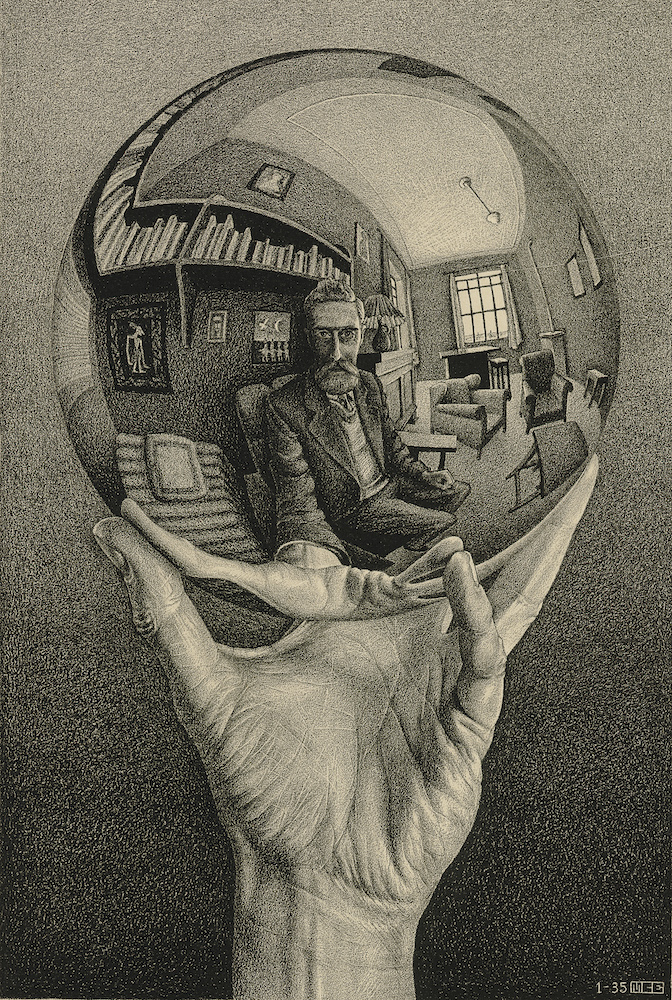Maurits Cornelis Escher’s iconic images, depicting impossible architectures and whimsically tessellating patterns, captured the popular imagination in the 20th century, appearing on books and album covers, posters and t-shirts, and caught the eye of mathematicians and scientists, even if the art community itself was a little late to the party.
 M.C. Escher’s Hand with Reflecting Sphere. Image © The M.C. Escher Company.
M.C. Escher’s Hand with Reflecting Sphere. Image © The M.C. Escher Company.
The Dutch graphic artist’s works have undergone something of a revival in the 21st century, however, and a large-scale exhibition, which will see Escher’s work presented in dialogue with Japanese design studio nendo, is coming to the National Gallery of Victoria this month.
Although the art community was slow to pick up on Escher, his images, particularly works like his staircase-ridden Relativity, remained popular. “The visual conundrum appeals to everyone’s sense of curiosity about space, how things work and the idea of the puzzle and the visual device, trying to decode that,” says Ewan McEoin, NGV’s Senior Curator, Contemporary Design and Architecture. “I think he just found his own space that wasn’t occupied by many other artists – and perhaps that was why...











Comments
Log in to join the conversation.